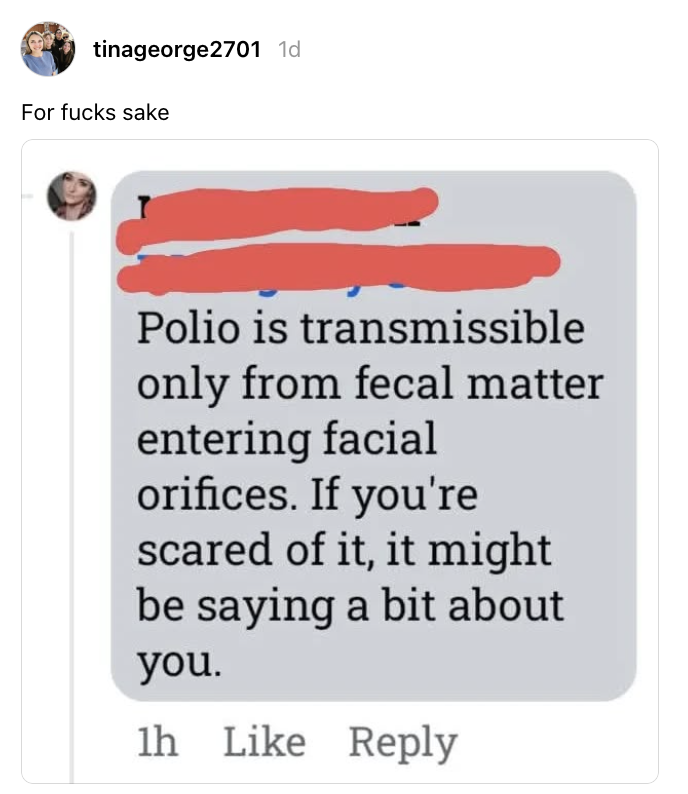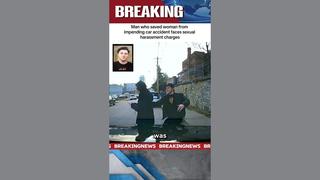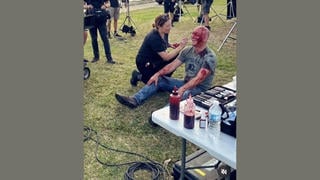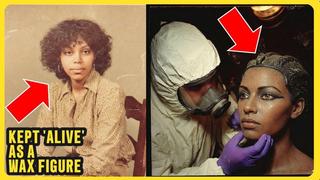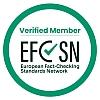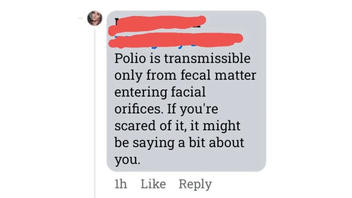
Does the polio-causing poliovirus infect people exclusively through direct contact between "fecal matter" and "facial orifices"? No, that's not true: While multiple health agencies say that the fecal-oral route is common, that includes a number of possibilities. For example, polio may spread through consuming contaminated food or water.
The claim appeared in an image (archived here) being commented on in a Threads post published on January 5, 2025. The post shared what looked like a screenshot of another post that opened:
Polio is transmissible only from fecal matter entering facial orifices. If you re scared of it, it might be saying a bit about you.
This is what it looked like on Threads at the time of writing:
(Source: Threads screenshot taken on Mon Jan 6 15:56:16 2024 UTC)
The commented-on post implied that polio only transmits when "fecal matter" directly enters "facial orifices." However, that's not an accurate summary of what credible sources say about the spread of the disease.
According to the World Health Organization (archived here), "the virus is transmitted by person-to-person spread mainly through the faecal-oral route or, less frequently, by a common vehicle (for example, contaminated water or food) and multiplies in the intestine."
In 1958, the WHO published a diagram, shown on Page 12 of this PDF (archived here), explaining that the name of the route refers to the points where some viruses exist and enter a human body, and that produces a range of possibilities for transmission such as through unwashed hands, contaminated water or food.
The fact sheet of the European Centre for Disease Prevention and Control (archived here) about polio reads:
-
The virus is transmitted via droplets or aerosols from the throat and by faecal contamination of hands, utensils, food and water. The majority of transmissions occur via person-to-person contact or the faeco-oral route, although the oro-oral route is also possible.
-
The following factors have been identified as contributing to continued polio transmission: high population density; poor health service infrastructure; poor sanitation; high incidence of diarrhoeal diseases; and low oral polio vaccine coverage.
The Centers for Disease Control and Prevention website (archived here) offers specific examples illustrating how people may get infected with the polio-causing virus:
You can get polio from:
- Contact with the feces (poop) of an infected person
- Droplets from a sneeze or cough of an infected person (less common)
For example, you can get polio if you:
- Eat raw or undercooked food or drink water or other drinks that are contaminated with the feces of an infected person.
- Put a contaminated object such as a toy in your mouth.
- Touch a contaminated object and put your fingers in your mouth.
- Have close contact with a person sick with polio, for example when caring for them.
The website of the Cleveland Clinic (archived here) lists more examples of what the fecal-oral route may look like:
- Not washing your hands after going to the bathroom or touching poop (like changing diapers).
- Swimming in contaminated water. Water can become contaminated when someone who has diarrhea swims in it.
- Touching contaminated surfaces.
Besides polio, other diseases spread through the same route. The list includes Hepatitis A (archived here) and cholera (archived here).
Other Lead Stories fact checks about health are here.

